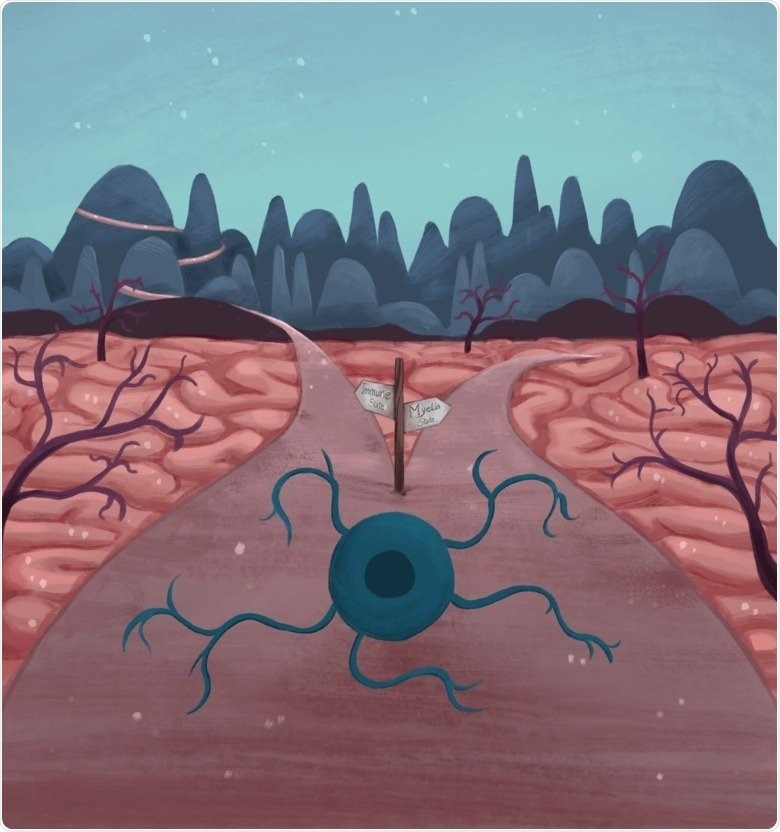A team of international researchers headed by Karolinska Institutet in Sweden revealed that oligodendrocytes, a kind of central nervous system cell, may play a different function in the progression of multiple sclerosis (MS) than previously assumed. The results might pave the way for novel MS treatments, and they were published in the journal Neuron.

Oligodendroglia at a crossroad in multiple sclerosis: proceed to the Myelin State or overcome epigenetic mountains to achieve the Immune State. Image Credit: Amagoia Agirre.
MS is caused by immune cells attacking oligodendrocytes and the myelin they make, a protective covering that surrounds nerve cells. These assaults alter information flow in the brain and spinal cord, causing nerve damage and triggering MS symptoms including tremors and gait loss.
Understanding the processes that determine MS risk is crucial to developing effective treatments. Previous genetic research has shown mutations (single nucleotide polymorphisms) in human genome areas linked to an increased risk of MS. Many of these areas are found near genes involved in immune cell function.
Open configuration of the genome
In this work, the researchers discovered that oligodendrocytes and their progenitors had an open genome around immune genes and MS-risk areas in mouse and human brain samples. This shows that MS risk variants may play a role in the activation of adjacent genes in oligodendrocytes and their progenitors, implying that they may play a larger role in the formation of MS than previously assumed.
Our findings suggest that the risk for multiple sclerosis might manifest by misfunction not only of immune cells, but also of oligodendrocytes and their precursor cells. These findings indicate that these cells can also be targeted for therapeutical approaches for MS, to prevent misfunction that might be caused by these mutations.”
Gonçalo Castelo-Branco, Professor, Department of Medical Biochemistry and Biophysics, Karolinska Institutet
Gonçalo Castelo-Branco carried out the study with co-first authors Mandy Meijer, a PhD student, and Eneritz Agirre, a researcher.
Source:
Journal reference:
Meijer, M., et al. (2022) Epigenomic priming of immune genes implicates oligodendroglia in multiple sclerosis susceptibility. Neuron. doi.org/10.1016/j.neuron.2021.12.034